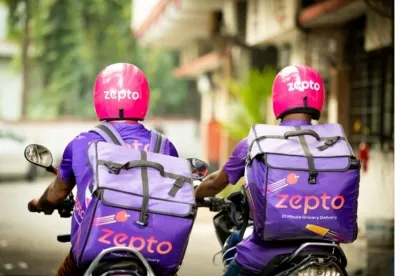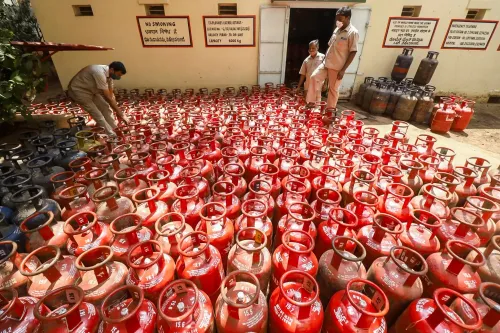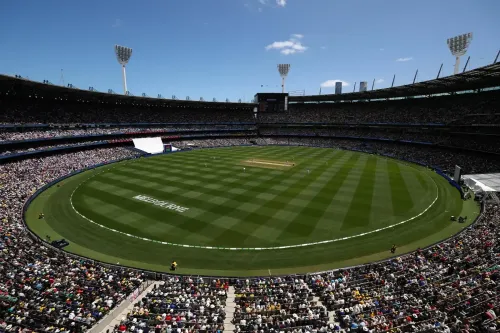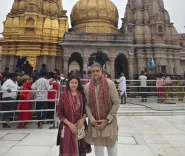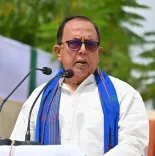What’s Behind the Rising Tensions in Gujarat's Sabarkantha?
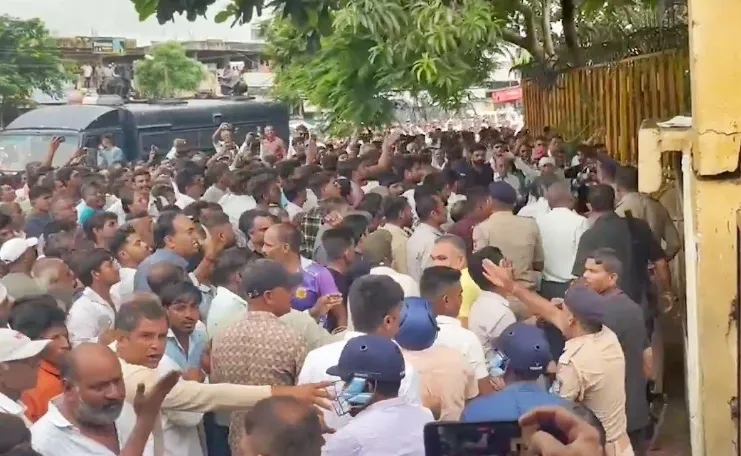
Synopsis
Key Takeaways
- Protests in Sabarkantha escalating over milk pricing issues.
- Farmers are boycotting milk deliveries.
- Significant economic implications for local dairy farming.
- Police intervention met with resistance from farmers.
- Calls for accountability and transparency from Sabar Dairy.
Sabarkantha, July 16 (NationPress) A protest against milk pricing issues has spiraled into turmoil in Gujarat's Sabarkantha and Aravalli districts, where cattle breeders have engaged in confrontations with law enforcement outside Sabar Dairy.
This unrest, now entering its third day, escalated following the death of a farmer amid the turmoil, leading to FIRs being lodged against 74 leaders, including former MLA Jashu Patel, and more than 1,000 unidentified demonstrators.
The discontent arises from claims of inequitable profit distribution by Sabar Dairy. Last year, the dairy allocated Rs 602 crore at a profit rate of 17 percent to members across 14 talukas, while this year’s payout plummeted to Rs 350 crore at a mere 9.75 percent, citing an ongoing audit. The Rs 252 crore shortfall has incited significant dissatisfaction among thousands of cooperative members.
On Sunday, the demonstration erupted into chaos as thousands of dairy members and cattle farmers overwhelmed the premises of Sabar Dairy.
Violent confrontations ensued, with heavy stone-throwing countered by police deploying tear gas.
In response, cattle breeders from villages including Medhasan, Khambhisar, Hafsabad, Shinawad, Butal, Kolvada, Navagam, and Akrund in Aravalli have decided to cease milk deliveries to local mandalis, instead dumping it onto the streets in protest.
In a poignant act of rebellion, demonstrators in several villages conducted symbolic last rites for Sabar Dairy's chairman and directors, burning effigies and displaying posters.
With nearly 1,800 milk societies involved in the boycott, the situation shows no signs of abating. Frustration continues to rise over both the law enforcement's actions and the silence from Sabar Dairy management.
The Sabarkantha district, which encompasses approximately 1,389 villages and is home to around 2.5 million residents, stands as Gujarat's second-largest milk-producing area, yielding about 9,58,000 tonnes of milk during the 2022–23 period.
Dairy farming represents the nation's second most significant economic activity after agriculture, with over 70 percent of rural households involved in livestock rearing, particularly among smallholder farmers who typically maintain between two to five animals each.
A focused survey conducted in select talukas (Himatnagar, Prantij, Idar) covering 150 dairy farmers revealed shared challenges such as high-interest loans and insufficient housing (over 25 percent), as well as concerns regarding feed costs and a lack of knowledge about balanced rations.
Notable buffalo breeds like the Surti, common in the region, yield an average of 1,600–1,800 litres per lactation, enhancing the district's dairy production.
Overall, the rural landscape of Sabarkantha is intricately linked to dairy: small-scale cattle breeders create a network that supports both local economies and the extensive cooperative framework of Sabar Dairy.


